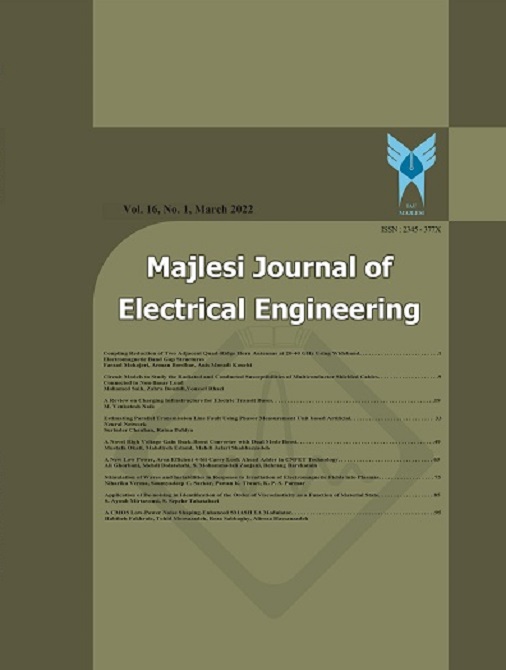[1] R. Van Meter, K. Nemoto, W. J. Munro, and K. M. Itoh, “Distributed arithmetic on a quantum multicomputer,”ISCA '06 Proceedings of the 33rd annual international symposium on Computer Architecture2006, pp. 354-365.
[2] R. Van Meter and M. Oskin, “Architectural implications of quantum computing technologies,”ACM Journal on Emerging Technologies in Computing Systems (JETC), vol. 2, pp. 31-63, 2006.
[3] R. Van Meter, K. M. Itoh, and T. D. Ladd, “Architecture-dependent execution time of Shor's algorithm,”Proc. Int. Symp. on Mesoscopic Superconductivity and Spintronics, Also Arxiv preprint quant-ph/0507023, 2006.
[4] D. Deutsch and R. Jozsa, “Rapid Solution of Problems by Quantum Computation,”Proc. Royal Soc. London, vol. 439, pp. 553-558, 1992.
[5] P. W. Shor, “Polynomial-Time Algorithms for Prime Factorization and Discrete Logarithms on a Quantum Computer,” in 35th Ann. Symp. Foundations of Computer ScienceLos Alamitos, Calif.: IEEE Computer Society Press, 1994, pp. 124-134.
[6] L. K. Grover, “A Fast Quantum Mechanical Algorithm for Database Search,” in 28th Annual ACM Symposium on the Theory of Computation New York: ACM Press, 1996, pp. 212–219.
[7] L. K. Grover, “Fixed-point quantum search,”Physical Review Letters, vol. 95, 2005.
[8] G. Brassard, P. Høyer, and A. Tapp, “Quantum counting,” in 25th Int. Colloquium on Automata, Languages and Programming (ICALP’98): Springer, 1998, pp. 820–831.
[9] C. H. Bennett and others, “Strengths and Weaknesses of Quantum Computing,”SIAM J. Computing, vol. 26, pp. 1510-1523, 2001.
[10] C. Zalka, “Grover’s quantum searching algorithm is optimal,”Physical Review A, vol. 60, pp. 2746-2751, 1999.
[11] D. Simon, “On the power of quantum computation,” in 35th Ann. Symp. on Foundations Computer Science: ACM, 1994, pp. 116–124.
[12] S. Hallgren, “Polynomial-time quantum algorithms for pell's equation and the principal ideal problem,” in 34th ACM Symp. on Theory of Computing (STOC), 2002, pp. 653-658.
[13] Y. Aharonov, L. Davidovich, and N. Zagury, “Quantum random walks,”Physical Review A, vol. 48, pp. 1687–1690, 1993.
[14] J. Kempe, “Quantum random walks: an introductory overview,”Contemporary Physics, vol. 44, pp. 307-327, 2003.
[15] S. Lloyd and J. J. E. Slotine, “Quantum feedback with weak measurements,”Physical Review A, vol. 62, p. 12307, 2000.
[16] R. Ruskov and A. N. Korotkov, “Quantum feedback control of a solid-state two-level system,”Arxiv preprint cond-mat/0107280, 2001.
[17] M. A. Nielsen and I. L. Chuang, Quantum Computation and Quantum Information: Cambridge University Press, 2000.
[18] T. Nishino, “Mathematical models of quantum computation,”New Generation Computing, vol. 20, pp. 317-337, 2002.
[19] A. M. Wang,“A Universal Quantum Network-Quantum Central Processing Unit”,Chinese Physics Letters, vol. 18, pp. 620-622, 2001.
[20] A. Barenco, D. Deutsch, A. Ekert, and R. Jozsa, “Conditional quantum dynamics and logic gates,”Physical Review Letters, vol. 74, pp. 4083-4086, 1995.
[21] A. M. Wang “Quantum Central Processing Unit and Quantum Algorithm,”Chinese Physics Letters, vol. 19, pp. 620-622, 2002.
[22] M. R. Soltan Aghaei, Zuriati Ahmad Zukarnain, Ali Mamat, and H. Zainuddin, “A Hybrid Algorithm for Finding Shortest Path in Network Routing,”Journal of Theoretical and Applied Information Technology, vol. 5, 2009.
[23] M. R. Soltan Aghaei, Zuriati Ahmad Zukarnain, Ali Mamat, and H. Zainuddin, “A Hybrid Architecture Approach for Quantum Algorithms,”Journal of Computer Science, vol. 5, pp. 725-731, 2009.
[24] M. R. Soltan Aghaei, Zuriati Ahmad Zukarnain, Ali Mamat, and H. Zainuddin, “A Quantum Algorithm for Minimal Spanning Tree,” in 3rd Int. Sym. on Information Technology (ITsim08) Malaysia: Proc. IEEE, 2008.

